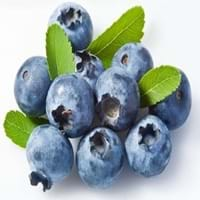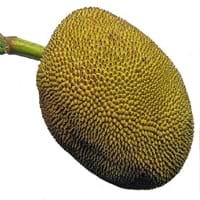Health Benefits
Cancer prevention, Cures gastro-intestinal troubles, Improves night vision, Improves stomach health, Prevents diabetes, Prevents high blood pressure, Reduces blood circulation problems
Cancer prevention, Heart care, Prevents constipation, Regulation of heart rate, Treatment of colonic diseases
General Benefits
Fights against infections, Helps in weight loss, Prevents blood clotting in vessels, Treatment of urinary tract infections
Controls blood pressure, Cures cough, Digestive aid, Flu treatment, Improves eye vision, Treatment of common cold
Skin Benefits
Anti-aging benefits, Nourishes skin, Protects against skin damage
Brightens and lightens complexion, Reduces wrinkles
Hair Benefits
Prevents hair loss
Promotes longer and healthier hair, Regulates hair growth
Allergy Symptoms
Not Available
Abdominal cramps, Diarrhea, Skin Rashes, Swelling of mouth, tongue or lips, Vomiting
Side Effects
Decrease in blood sugar levels, Diarrhoea, Dizziness, Headache, Internal bleeding, Stomach pain
Allergic reaction, Coagulation
Pregnant Women
Yes
Not Available
Best Time to Eat
As a snack in the late afternoon, Don't consume at night and before bed, Eat the fresh ones, avoid mixing with any other foods, don't eat after meal., Morning time (before lunch)
Along with meal, As a snack in the late afternoon, Don't consume at night and before bed, Eat the fresh ones, avoid mixing with any other foods, don't eat after meal., Morning time (before lunch)
Vitamin B5 (Pantothenic Acid)
Vitamin C (Ascorbic Acid)
Vitamin K (Phyllochinone)
Not Available
Calories in Fresh Fruit with Peel
Not Available
Calories in Fresh Fruit without Peel
Not Available
Calories in Frozen Form
Not Available
Calories in Dried Form
Not Available
Calories in Canned Form
Not Available
Type
Berry
Tree fruit, Tropical
Season
Summer
Autumn, Monsoon, Summer
Varieties
Dwarf bilberry, Piper, bog blueberry, Northern bilberry, Mountain bilberry and Oval-leaved bilberry
Black Gold, Cheena, Cochin, Dang Rasimi, Golden Nugget and Golden Pillow
Color
Dark purple
Dark green, Golden yellow, Green, Indigo, Magenta, Yellowish-orange
Inside Color
Light Green
Yellow
Soil Type
Moist, Well-aerated
Clay loam, Porous, Sandy, Well-drained
Climatic Conditions
Cold
Humid, Warm
Facts about
- Bilberries are used in manufacturing of alcoholic drinks.
- They are used to improve aromas of sorbets.
- The green extract of it's leaves is used in textile industry as natural dye.
- There are up to 500 seeds in Jackfruit & these seeds are edible.
- Root extracts of Jackfruit tree is used to treat diarrhea, fever and asthma.
- The taste of jackfruit is combination of mango, banana, melon and papaya.
Other Countries
Denmark, Finland, Iceland, Sweden
Bangladesh, Indonesia, Nepal, Thailand
Top Importer
United States of America
United States of America
Botanical Name
Vaccinium myrtillus
Artocarpus heterophyllus
Synonym
blaeberry, whinberry, European blueberry, whortleberry
Artocarpus heterophylla or Artocarpus integra or Artocarpus integrifolia
Subkingdom
Tracheobionta
Tracheobionta
Division
Magnoliophyta
Magnoliophyta
Class
Magnoliopsida
Magnoliopsida
Subclass
Dillenhidae
Alismidae
Family
Ericaceae
Moraceae
Genus
Vaccinium
Artocarpus
Species
Vaccinium myrtillus
A. heterophyllus
Generic Group
Heath
Not Available
Difference Between Bilberry and Jackfruit
We might think that Bilberry and Jackfruit are similar with respect to nutritional value and health benefits. But the nutrient content of both fruits is different. Bilberry and Jackfruit Facts such as their taste, shape, color, and size are also distinct. The difference between Bilberry and Jackfruit is explained here.
The amount of calories in 100 gm of fresh Bilberry and Jackfruit with peel is 44.00 kcal and Not Available and the amount of calories without peel is Not Available and 95.00 kcal respectively. Thus, Bilberry and Jackfruit belong to Low Calorie Fruits and High Calorie Fruits category.These fruits might or might not differ with respect to their scientific classification. The order of Bilberry and Jackfruit is Ericales and Rosales respectively. Bilberry belongs to Ericaceae family and Jackfruit belongs to Moraceae family. Bilberry belongs to Vaccinium genus of Vaccinium myrtillus species and Jackfruit belongs to Artocarpus genus of A. heterophyllus species. Beings plants, both fruits belong to Plantae Kingdom.









